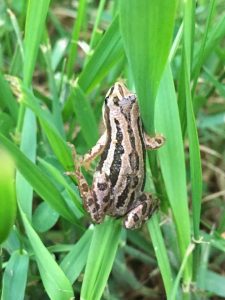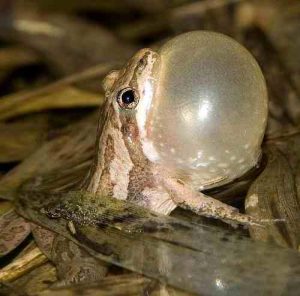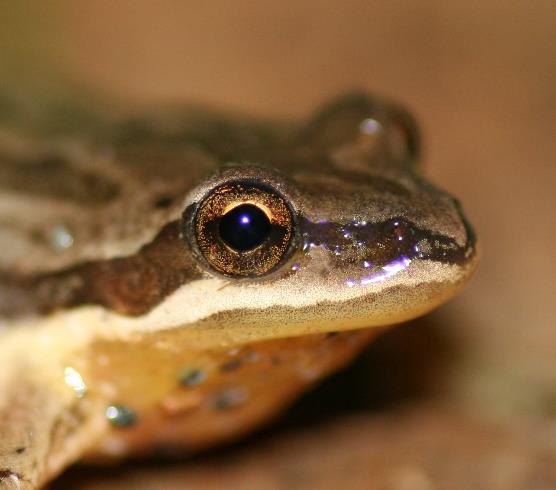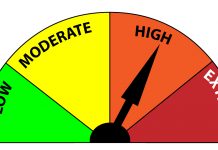Though the days of spring still feel far away, it won’t be too long until the frogs start calling, and conservationists are in turn calling on Muskoka residents to help determine the range of the western chorus frog.
Volunteers are needed across Ontario as part of a long-term monitoring program created by Blazing Star Environmental, the Canadian Wildlife Service and Trent University. The program helps conservationists understand the changing distribution of western chorus frogs, a threatened species that has experienced localized population declines in recent years. The data allows members of the conservation community to detect and respond to declines in the frog’s range. Siobhan Galway, a terrestrial and wetland ecologist at Blazing Star Environmental, has helped develop and implement the monitoring program over the past three years.

“The range of the western chorus frog extends from London, east to Hamilton, northwest to Manitoulin Island and east again into Ottawa and Quebec. It’s a pretty big area,” Galway said in an email interview. “However, the distribution of the frogs in the northern part of their range from Muskoka northward is not well understood. Fewer surveys are conducted up north due to a smaller population and more rugged (yet beautiful) terrain.”
Galway said two goals of the program are to clarify the northern distribution of the frog species and to understand the habitat that chorus frogs use, which includes areas on the Canadian Shield. The program offers Muskoka residents a chance to get outside and enjoy nature, but more importantly, each survey conducted in the region provides extremely valuable information to the program since most volunteers don’t live as far north as cottage country.
The team at Blazing Star is hosting a free webinar to provide background on the western chorus frog and the monitoring program at 11 a.m. on Feb. 6. They’ll go over the time commitment required for being a volunteer and the program’s preliminary results from last year followed by a question period where prospective volunteers can ask their questions and get immediate feedback.
“We have created the program to be as volunteer friendly as possible,” Galway said. “This program’s success depends on dedicated individuals gathering data to detect biologically significant changes. No previous experience is required to volunteer for the program, we provide all the training materials necessary to help you become a frog ID master in no time!”
Volunteers get to choose the distance they’re willing to travel as well as the number of sites they want to survey. Past volunteers have chosen anywhere from two to 75 kilometres and anywhere from one to 20 sites, Galway said, so the level of commitment can be tailored to each volunteer.

Participants need to survey their assigned sites three times each during the two- to three-week calling window. Conducted between 10 a.m. and 6 p.m., the surveys require five minutes of listening to frogs along with time to travel to and from the sites and record data. Blazing Star will send out alerts when frogs start calling in different regions within their range, which could be any time from March to late April or early June depending on the weather.
“This program is ideal for anyone that has a passion for nature, regardless of experience or age,” Galway said. “Since our surveys are conducted road-side, our program sites are easily accessible to all! This means that anyone including experienced naturalists, retired seniors, budding naturalist teenagers and even families can participate.”
To register for the informational webinar on Feb. 6, click here. To register as a volunteer, click here. For more information, contact info@blazingstar.ca. Watch the video below from Hinterland Who’s Who to learn more about chorus frogs.
Photo credits: “Western Chorus Frog” by Alex Galt/USFWS Midwest Region is licensed under CC BY 2.0, “Western Chorus Frog” by U.S. Fish and Wildlife Service Headquarters is licensed under CC BY 2.0.








